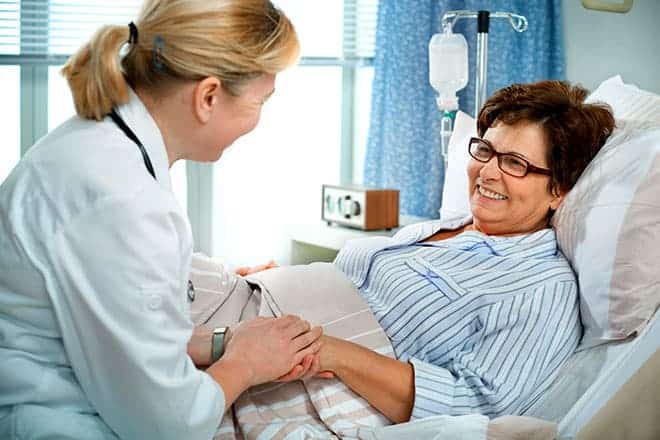A stroke can impact almost every aspect of a patient’s health. As the brain controls every single part of the body, it can determine their mobility, balance, communication, and emotions. A stroke can also prove fatal if they don’t receive medical attention quickly.
While genetics can increase a person’s risk, it’s their personal choices that could make them more susceptible to a stroke. Find out how to care for patients showing signs of a stroke.
- Monitor Blood Pressure
High blood pressure could double or quadruple a patient’s chance of experiencing a stroke. Their gender doesn’t matter; elevated blood pressure levels can play havoc with their vascular health.
For this reason, you must review your patients’ levels using a blood pressure monitor during a health exam, which should be lower than 120/80. If they do have high blood pressure, you must make recommendations on how they can lower their levels and reduce their risk of a stroke.
For example, you could encourage the following changes to their lifestyle:
- Decrease salt consumption – consume a maximum of 1,500 milligrams per day
- Exercise (30 minutes each day)
- Consume five portions of fruit and vegetables daily
- Stop smoking
- Cut out monounsaturated, saturated, and polyunsaturated fats
- Encourage Weight Loss
Patients could reduce their risk of a stroke, as well as other medical issues, by losing as little as 10lbs. If their body mass index (BMI) is higher than 25, they should take the steps to lose weight to ensure they never experience a stroke.
For example, they might need to consume a maximum of 1,500 to 2,000 calories per day. However, this will depend on their BMI and physical activity level. Patients should also be encouraged to incorporate more exercise into their lifestyle, such as brisk walking, running, cycling, tennis, or golfing.
- Recommend a Decrease in Alcohol Consumption
While alcohol is fine to consume in moderation, excessive consumption could increase a person’s likelihood of a stroke. If a patient drinks more than two glasses of alcohol each day, their risk could greatly increase.
If your patient states they drink two or more glasses each day, encourage them to either cut it from their lifestyle or to decrease their consumption to one glass of alcohol per day. If they do want to drink alcohol, recommend they drink a small glass of red wine, as it contains resveratrol that can reportedly protect both the heart and brain.
- Review Breathing or Heart Concerns
Many patients are unaware they are living with atrial fibrillation, which is an irregular heartbeat that could lead to the formation of clots inside the heart. Once a clot forms, it could travel to their brain and cause a stroke.
If your patient shows shortness of breath or experiences heart palpitations, perform a health exam to identify the cause and recommend further tests. If they do have atrial fibrillation, you may need to prescribe a blood thinner or a direct-acting anticoagulant drug.
- Review Diabetes Management
Diabetes can affect a person’s health in a variety of ways, as it can cause nerve damage, cardiovascular disease, kidney and/or eye damage, dementia, and a stroke. For instance, regular spikes in blood sugar can gradually damage their blood cells, which can cause clots to form that can make their way to the brain.
If your patient is failing to take control of their diabetes, you must inform them of the many health complications they could face. Also, provide advice on how they can keep their blood sugar levels under control.
For example, they must monitor their blood sugar each day, take prescribed medications, and embark on a healthy diet and exercise plan to manage diabetes.
Understand the Warning Signs
Every health practitioner has a duty to understand the signs of a stroke, as it can be caused by a number of health issues, such as cardiovascular disease, obesity, and diabetes.
Common warning signs of a stroke include:
- Trouble speaking
- Sudden confusion
- Numbness (or weakness) of the face, leg or arm – it tends to occur on one side of the body
- A difficulty to see in one or both eyes
- Walking issues
- A loss of balance
- Poor co-ordination
- A severe headache with no cause
The above symptoms will often strike suddenly. If so, you must call 911 right away to seek emergency medical attention. If available and you’re trained to do so, you could provide a patient with a tPA, which can stop or reverse symptoms within 4.5 hours of the symptoms occurring. The sooner you act, the more likely a patient will recover from a stroke.
A stroke can affect every gender and age. It is, therefore, important to stress the importance of a healthy diet, regular exercise, and routine health exams to your patients. You must also ensure they are caring for an existing health condition to lower their risk.
All content herein is owned by author exclusively. Expressed opinions are NOT necessarily the views of VNR, authors, affiliates, advertisers, sponsors, partners, technicians, or VT Network. Some content may be satirical in nature.
All images within are full responsibility of the author and NOT VNR.
Read Full Policy Notice - Comment Policy





























